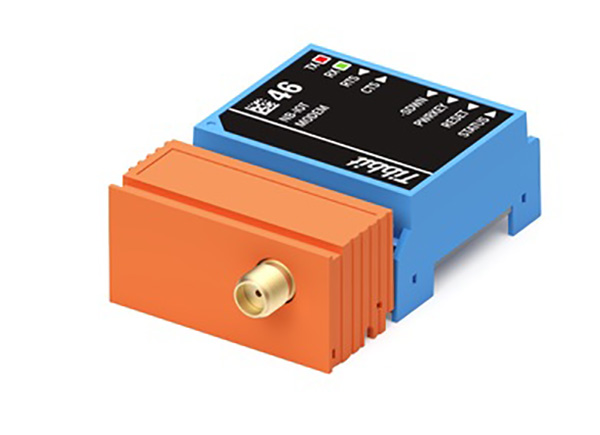Tibbit#46- Cat-M1 or NB-IoT Modem

This Tibbit#46 comes in the H2 hybrid form factor and is based on the SIM7000G NB-IoT (Cat-M1/Cat-NB/LTE/GSM) modem manufactured by SIMCom.
It features an SMA connector on the front for use with an external antenna, which is not included with the Tibbit but is required for it to operate. This Tibbit#46 is compatible with LTE Cat-M1 and NB-IoT services.
The modem has standard TX, RX, RTS, and CTS signals, as well as several additional control lines.
As Cat-M1 and NB-IoT services provided by telecoms are typically cheaper than LTE (4G), their appeal for mass deployment is obvious.
However, before subscribing to any telecommunications service, you must properly assess your project's needs.
The most important criterion is whether your application will be mobile or stationary. While Cat-M1 is suitable for either, NB-IoT is specifically intended for stationary applications only.
For example, if your application is being deployed in a vehicle, Cat-M1 should be chosen because it supports tower handovers.
By contrast, NB-IoT does not support such handovers, but is ideal for stationary applications with low data requirements, such as vending machines, street lighting, as well as heating, ventilation, and air-conditioning (HVAC) systems.
You must also factor in your project's expected bandwidth usage. If you need to transfer large amounts of data relatively quickly, Cat-M1 will be more suitable.
If your system will only be transmitting small amounts of data that are not time-critical, NB-IoT will be sufficient for your needs and likely more cost-effective.
If you require significant bandwidth for longer periods, Tibbo recommends that you consider using LTE(4G) and our Tibbit #45-1~3.
Finally, consider the cellular signal strength at your target deployment locations. NB-IoT has better signal penetration than LTE(4G) and Cat-M1.
This means that if NB-IoT service is available at all, it may have a better signal reception. At the same time, NB-IoT usually has a much less stable "spot" bandwidth, meaning that the actual data throughput fluctuates wildly from one moment to the next.
Please check the detailed information from the website:
- #46, H2: Cat-M1/NB-IoT Modem - Tibbo Docs